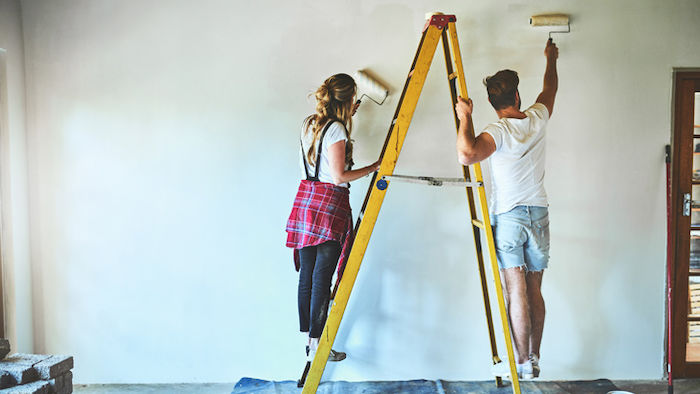Four ways to get your foot on the property ladder
For those under 40, the Australian dream of owning a property has been an increasingly challenging prospect. In the last two decades house prices have skyrocketed (16 times the median wage versus four times in the 1980s), jobs have become casualised and precarious, university debts are mounting alongside credit card debts.
Then coronavirus struck.
Since mid-March, 11.8% of jobs for those under 30 have crumbled under the pandemic's economical onslaught of Australia's workforce. The class of 2020 have now officially graduated into the country's first recession in 29 years, and many have raided their scant Super funds at the worst possible time.
Millennials face years of wage inequality during the country's post-pandemic rebuild, or have to re-skill toward industries with higher staff demands, adding to the existing shackles of student loan repayments.
The average HECS debt today sits at $20,303 (according to recent ATO figures) as the cost of degrees continue to rise for Australian students. Millennials now face almost twice the HECS debt of their predecessors who graduated in the 90s - not to mention baby boomers, who had access to free tertiary education from the 70s until mid-80s.
This unfair advantage for Millennials is topped by the currently devilish property landscape. According to Demographia's latest annual housing market report, Australia is the world's second least affordable place to buy property.
With a median household income of $48,360 and properties costing an average of $788,000, Australian house prices are a whopping 16 times the median wage versus four times in the 1980s.
With this in mind, it's no wonder an influx of young Australians are turning into 'boomerang kids', moving back home with their parents as a way of coping financially. But it is possible for young people to get on the property ladder if they get creative.
1. Rentvest
Rentvesting is a strategy that enables you to live where you want and buy where it is affordable to invest.
The area you want to live in may not be within your price range of affordability, nor may it be the best area to discover growth, therefore it is advised to not necessarily compromise your lifestyle by living somewhere simply because it's affordable.
The benefits to this way of investing are that you make your money work for you, by gaining the benefits of depreciation and tax back which help pay off your mortgage faster. This will enable you to buy again and expand your portfolio.
It is also a non-emotional decision, which makes more properties available to you. You are not limited to what your preferences are to live in an example number of bedrooms and bathrooms, you have a broad range of properties within your borrowing capacity to choose from. This gives you greater opportunity to find areas that are seeing growth with job opportunities, infrastructure, are close to schools and public transport. These are all great indicators that an area will be well sought after and more likely to see capital growth.
2. Buddy up
This involves pairing up with a friend, sibling, parent, partner to enter the property market sooner. Instead of waiting to save the entire deposit and setup costs alone, this style of investing allows you to leverage off a buddy to split the expenses and double the savings.
Not only do you get to split the costs which allows you to get into the market twice as fast, it is also a good way for beginners to find that confidence to enter the market, as it alleviates a bit of fear of doing it on their own. Once some growth is seen in the property it allows you to leverage off it and purchase again which will grow your portfolio faster than doing it alone.
The things to consider when 'buddying up' are the circumstances of the person you are purchasing with may change, which may affect how long you keep the property together. You may want to consider selling it or buying them out, which may affect your plan as well. You may have different motivations towards paying down the debt and using the equity to purchase again. I think it's important to discuss your goals prior to purchasing a property together, just so that you have similar expectations aligned.
3. Pay rent money towards deposit of purchase
Some developers are offering properties for rent where a portion of that rent money goes towards a contribution for the deposit of the property you are renting out. This is a form of forced saving and is a great way to lock in a property price in today's market that you won't be expected to settle on till the future (number of years dependent on developer).
This is allowing people to experience the property and enjoy it as their own home, while saving in the meantime to be able to afford to purchase it in the future.
4. Join a syndicate
There are a number of different syndicate strategies that can help young people invest in property - from purchasing a number of bricks in a property, to allocating a certain amount of funds to be a percentage shareholder in that property. The main benefits of this avenue are the low entry funds required and minimal knowledge of the product as it is already decided by the company.
The other thing to consider is that you are a marginal shareholder, which means your growth will reflect that. You have less control over the decisions regarding the property and there may be more fees associated with the gains.
Get stories like this in our newsletters.



